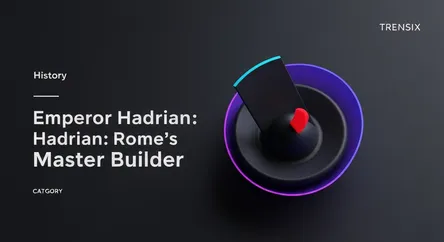History
Emperor Hadrian: Rome's Master Builder

Discover Emperor Hadrian, one of Rome's "Five Good Emperors," known for consolidating the empire and his massive building projects like Hadrian's Wall.
What is it?
Hadrian (Publius Aelius Hadrianus) was the Roman Emperor from 117 to 138 AD. Born in Hispania, he was the third of the "Five Good Emperors," a period marked by relative peace and stability in the Roman Empire. Unlike his predecessor Trajan, who focused on expansion, Hadrian's reign was characterized by a policy of consolidation and defense. He spent a significant portion of his rule traveling to nearly every province of the Empire. A great admirer of Greek culture, he was often called "Graeculus" (the Greekling) and heavily promoted Hellenic culture across the empire.
Why is it trending?
Hadrian's legacy is defined by his monumental architectural and engineering projects. His most famous achievement is Hadrian's Wall in northern Britain, a 73-mile defensive fortification marking the northern limit of the Roman province of Britannia. In Rome, he rebuilt the iconic Pantheon with its revolutionary concrete dome and constructed the vast Temple of Venus and Roma. His focus on securing the empire's borders rather than continuous expansion represented a major strategic shift in Roman policy, ensuring a long period of stability.
How does it affect people?
Hadrian's policies had a lasting impact. His emphasis on stable, defensible borders shaped the geopolitical landscape of the era and preserved the empire's strength. The fortifications he built, especially Hadrian's Wall, became enduring symbols of Roman power and engineering, now serving as major historical tourist attractions. His legal reforms, which included codifying Roman law, created a more consistent and fair legal system that influenced Western law for centuries. His numerous building projects, from aqueducts to temples, improved infrastructure and left a cultural legacy that continues to be studied and admired today.